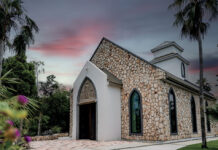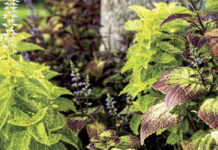But with only water, malted barley, hops and yeast as the basic ingredients of beer, how is it possible to create so many different flavours and aromas, from very strong dark beers, porters and stouts, to bitters, sweet ales, fruity wheat beers and crisp and dry lagers?
The complex brewing process contains several elements that influence the flavour of a beer, such as the types of malts, hops and yeast used and the way they are introduced to the process.
In a first step grain, mostly barley but sometimes also wheat, corn or rice, is malted. The malting process of soaking, drying and cracking the grain can be varied to produce many different styles of malt that will result in a wide range of colours and aromas.
Base malts give colour, add some flavour and supply the fermentable sugars. Speciality malts, in contrast, provide none or only few of the sugars but strongly influence the colour and flavour.
Pale malt, the most common form of base malt, has a neutral malt flavour and is light in colour. Mild malt is kilned at slightly higher temperatures to produce a nutty flavour.
Caybrew uses Pilsen malt in all of its beers and the amount of base malt will determine the alcohol content of the beer, explains brewmaster Andreas Moerl.
For instance Caybrew’s Ironshore Bock at 7 per cent alcohol requires almost double the quantity of malt than Caylight, the breweries light beer that has only 3,5 per cent alcohol.
Speciality malts like carapils give beer a candy sweetness and golden colour. Carapils also adds more body to the beer and helps retain the head as it is typical for a pilsner.
Roasted barley is used for stouts, porters and really dark beers.
It is roasted in a drum roaster much like coffee, and will give a beer roasted coffee type flavours. Caramel malt is another popular malt that has caramelised and crystallised and as a result will give beer sweetness through the additional sugars, as well as caramel flavours and lend it a red or copper colour.
Several types of malt can be mixed to bring out specific characteristics in the beer.
Caybrew’s Ironshore Bock for instance is made with black malt for a roasted flavour and darker colour and carapils malt to help create a thicker foam head. Munich malt in turn gives White Tip a more golden colour compared to Caybrew lager, says Moerl.
The malts are soaked in hot water during the mashing process, when enzymes convert starches from the grain into fermentable sugars.
The resulting sugary water, called wort, is strained through the mash to absorb as much of the sugars and flavours as possible. Sometimes more water is added (sparging) to extract as many of the desired properties from the grain as possible.
The wort is then boiled in a kettle and hops are added. Hops also give flavour and balance to what would otherwise be a much too sweet beer. Hops primarily bring bitterness to a beer and the earlier they are introduced in the boiling process the more bitter the beer will become.
At the same time hops will lose a lot of the other hoppy aromas and other flavours, the longer they are boiled. Therefore flavouring hops are added later during boiling.
If they are added after the boiling process, during the fermentation, this is known as dry-hopping and gives beer a more pronounced hoppy flavour but without the bitterness.
Besides being an excellent bittering agent and giving beer its personality, hops also have a bacteriostatic quality to them, which means they help preserve the beer. This is one of the reasons why hops have been a favourite with brewers for several hundred years.
In earlier days when there was no refrigeration this was an important factor, says Moerl, but hops are still needed to influence the aroma of a beer.
“We just use a small amount of bitter hops. Five minutes before you finish boiling, you add the aroma hops,” he notes.
There are plenty of varieties from the US, Germany, Poland, the Czech Republic and Australia.
“For our European style beers we get hops from Germany, and for the Ironshore, which is more of a US style beer because it reminds our customers of stronger, more flavourful homebrews, we use US hops. For the White Tip we actually use a combination of bitter hops from Germany and aroma hops from the US,” Moerl explains.
All of Caybrew’s beers are only lightly hopped, he says, compared to other lagers like Heineken or of course Indian Pale Ales, which are traditionally very bitter. This is a reflection of the local market and the demand for “thirst-quenching” beers.
In addition to the quantity and timing for adding the hops varying the length of the boil will also influence the flavour, Moerl notes. “By boiling the beer longer you can get a slightly breadish aftertaste.”
After boiling, the wort is filtered and then cooled, so that the last ingredient, yeast, can be added or “pitched”. The yeast predominantly transforms the sugars contained in the wort into alcohol and carbon dioxide.
It also produces a lot of the other flavour components that are characteristic of beer. There are two basic species of yeast: one is used for lagers and the other is used for ales.
Ale yeasts ferment faster and at higher temperatures. They produce more esters, which give the finished beer fruity flavours, for instance the banana and fruity aromas of hefeweizen.
Lager yeasts ferment more slowly at cooler temperatures and also require more maturation time after fermentation in order to get the flavour profile of a lager beer.
When Caybrew decided to develop an alternative lager to its flagship Caybrew, the idea was to create “something more Caribbean”, says Commercial Manager James Mansfield, which given the tradition of the sugar cane in the region would mean a light and slightly sweeter lager.
“Red Stripe for example has a sweet after taste,” adds Moerl. The specific flavour of the new White Tip, a more Belgian-style beer compared to the hoppier German-style Caybrew, was achieved by using Munich malt.
“And we stop the fermentation a little bit earlier so that not all the sugars are converted into alcohol and can then be tasted in the beer,” says Moerl.
The wider variety of beer styles now available at Caybrew mirrors a growing variety of beers available in Cayman generally.
Lagers represent the vast majority of beers produced today. Some lagers are branded as Pilsner, however the typical Pilsner, which has its origin in Pilsen in the Czech Republic, is a hop dominant beer made from 100 per cent barley malt.
American adjunct lagers in contrast use up to 50 per cent of rice or corn together with malted barley. In addition to US brands like Budweiser, Miller or Coors, Mexican beers including Presidente, Corona, Dos Equis or Tecate, and other non-US brands like Red Stripe, Singha, Tiger and San Miguel fall into this category.
With 65 different brands available in Cayman today, the local beer market today is a reflection of all the different traditions and cultural preferences in beer.
Whether it is the continental European lagers and wheat beers, the British IPAs, bitters and dark beers, Irish Guinness and other stouts, Mexican and Asian lagers, all are available for sale in Cayman, to bring a little bit of home to the Caribbean for the many expats and for everyone to experience what makes beer great: its diversity.






























